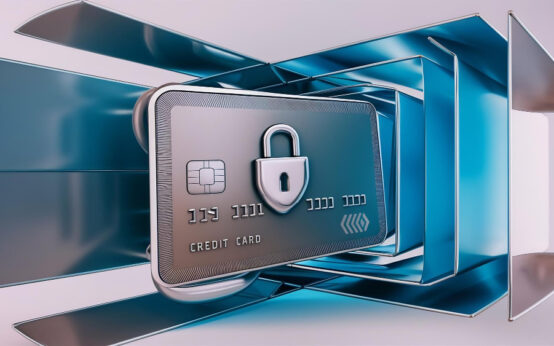Credit card cash advances can be convenient, but they often come with high fees and interest rates. Understanding how they work, their associated costs, and their impact on your credit score is crucial. This guide will also explore alternatives and provide tips for managing cash advances wisely. Let’s dive in!
How Does a Credit Card Cash Advance Work?
A credit card cash advance allows you to borrow money from your credit card’s available credit limit. You can obtain a cash advance by using your credit card at an ATM or a bank. When you request a cash advance, the amount you borrow is added to your credit card balance, and you will be required to pay it back with interest.
Understand the process: To get a cash advance, you need your credit card and a personal identification number (PIN). If you do not have a PIN, you may need to request one from your credit card issuer, which may take a few days. Once you have the PIN, you can use your credit card at an ATM to withdraw cash up to your card’s cash advance limit.
It’s important to note that the cash advance limit is typically a portion of your total credit limit. For example, if your credit card has a $5,000 credit limit, your cash advance limit might be $1,000. Check with your credit card issuer to know your specific limits.
How the interest works: Interest on cash advances usually starts accumulating immediately, unlike regular purchases that may have a grace period. The interest rate on cash advances is also higher than the rate for regular purchases. Additionally, there may be a cash advance fee, which is often a percentage of the amount borrowed or a flat fee, whichever is greater.
Using a cash advance for emergencies or immediate needs may be helpful, but it’s essential to understand the terms and how it affects your overall debt.
Costs and Fees Associated with Cash Advances

Costs and Fees
When you take out a cash advance using your credit card, several costs and fees come into play. It’s important to understand these charges to manage your finances wisely. Cash Advance Fee: Most credit cards charge a fee for cash advances. This fee can be a percentage of the amount withdrawn or a flat fee, whichever is higher.
Higher Interest Rates: Interest rates on cash advances are typically higher than on regular credit card purchases. Interest starts accruing immediately, with no grace period, making the costs add up quickly.
ATM Fees: If you withdraw cash from an ATM, additional fees may be imposed by the ATM operator. These fees can be an extra burden on top of your credit card’s cash advance fee.
Impact on Credit Limit: Cash advances reduce your available credit limit. Exceeding your limit or drawing too close to it can affect your credit score and overall financial health.
Overall Cost: Combining the cash advance fee, higher interest rates, and possible ATM charges, the overall cost of a cash advance can be quite high. It’s crucial to be aware of these costs to avoid financial pitfalls.
Impacts on Your Credit Score
When you take out a credit card cash advance, you borrow against your credit limit, which can impact your credit score in several ways. First, because cash advances often come with high fees and interest rates, you might find it more challenging to pay off the balance quickly, leading to increased debt. This rise in debt can increase your credit utilization ratio, a key factor in calculating your credit score.
Moreover, if you miss a payment or aren’t able to pay off the cash advance promptly, it will be reported to the credit bureaus as a missed payment, which negatively affects your credit score. Additionally, consistently relying on cash advances can signal to lenders that you may be experiencing financial difficulties, potentially impacting future borrowing opportunities.
An important aspect to consider is that the overall credit limit on your card remains the same, so a cash advance reduces your available credit. This increase in utilized credit can lower your score because credit scoring models often view high utilization as a riskier borrowing behavior.
Finally, it’s crucial to monitor how close you get to your credit limit because maxing out your card can further damage your credit score. Regularly checking your credit report and keeping track of your spending can help you avoid any unintended impacts on your credit score from cash advances.
Alternatives to Credit Card Cash Advances

In situations where you find yourself needing cash but want to avoid the high costs of a credit card cash advance, there are several viable alternatives to consider.
Personal Loans
Personal loans often offer lower interest rates compared to cash advances. Many banks and online lenders provide these loans, which can be used for a variety of purposes, including covering emergency expenses.
Credit Union Loans
Credit unions typically offer lower interest rates and more flexible repayment terms than traditional banks. Their personal loan services can be a great alternative for quick cash needs.
Borrowing from Family or Friends
Although it can be a sensitive option, borrowing from family or friends can be less costly and more flexible than taking out a credit card cash advance. Make sure to agree on repayment terms to avoid misunderstandings.
Payday Alternative Loans (PALs)
Some credit unions offer Payday Alternative Loans (PALs), which are designed to provide quick and affordable short-term loans. These typically have a cap on the amount you can borrow and lower fees compared to payday loans.
Using a Low-Interest Credit Card
If you have a credit card with a lower interest rate, it may be more affordable to make a purchase with that card instead of taking out a cash advance. Just make sure you can pay off the balance quickly to avoid accumulating interest.
Home Equity Line of Credit (HELOC)
A HELOC allows you to borrow against the equity in your home. While this involves more risk, as your home is used as collateral, the interest rates are generally lower than those for a credit card cash advance.
Employer Salary Advances
Some employers offer salary advance programs which allow you to borrow a portion of your upcoming paycheck. This can be a cost-effective solution, but check the terms carefully to avoid potential pitfalls.
Peer-to-Peer Lending
Peer-to-peer lending platforms connect borrowers with individual lenders, often at more favorable rates than traditional financial institutions. This can be a practical option if you have a decent credit score.
Local Assistance Programs
Depending on your situation, local non-profits and community organizations may offer emergency financial assistance or short-term loans at low to no interest. These programs are worth researching in times of need.
Tips for Managing Cash Advances Wisely
Managing cash advances from credit cards requires careful planning and discipline. Here are some practical tips to help you navigate this financial tool:
1. Develop a Repayment Plan
Before taking out a cash advance, create a plan to repay the amount quickly. High-interest rates can add up fast, so aim to pay off the balance as soon as possible.
2. Use for Emergencies Only
Cash advances should be a last resort for true emergencies. Avoid using them for discretionary spending, as the costs can outweigh the convenience.
3. Know the Costs Involved
Be aware of the fees, interest rates, and potential impacts on your credit score before taking a cash advance. This knowledge can help you make informed decisions.
4. Monitor Your Spending
Keep a close eye on your spending to avoid needing multiple cash advances. Implementing a budget can help you manage your finances better.
5. Consider Alternatives
Explore other options, such as personal loans or borrowing from friends and family, before resorting to a cash advance. These alternatives might be more cost-effective and less stressful.



 Best credit cards secured: your path to a stronger credit history <p style='text-transform:none; line-height:20px !important; font-size:16px; font-weight:normal; color:#424242; margin: 0px; margin-top:10px;'>They offer a smart way to show lenders you’re serious about managing your finances.</p>
Best credit cards secured: your path to a stronger credit history <p style='text-transform:none; line-height:20px !important; font-size:16px; font-weight:normal; color:#424242; margin: 0px; margin-top:10px;'>They offer a smart way to show lenders you’re serious about managing your finances.</p>  The best credit cards for lounge access: your key to premium airport comfort <p style='text-transform:none; line-height:20px !important; font-size:16px; font-weight:normal; color:#424242; margin: 0px; margin-top:10px;'>With these cards, you have exclusive access to lounges, offering comfort while you wait for your flight.</p>
The best credit cards for lounge access: your key to premium airport comfort <p style='text-transform:none; line-height:20px !important; font-size:16px; font-weight:normal; color:#424242; margin: 0px; margin-top:10px;'>With these cards, you have exclusive access to lounges, offering comfort while you wait for your flight.</p>  Safe, simple, and fun: discover the best debit cards for kids <p style='text-transform:none; line-height:20px !important; font-size:16px; font-weight:normal; color:#424242; margin: 0px; margin-top:10px;'>These cards offer the flexibility and convenience that both parents and kids need.</p>
Safe, simple, and fun: discover the best debit cards for kids <p style='text-transform:none; line-height:20px !important; font-size:16px; font-weight:normal; color:#424242; margin: 0px; margin-top:10px;'>These cards offer the flexibility and convenience that both parents and kids need.</p>